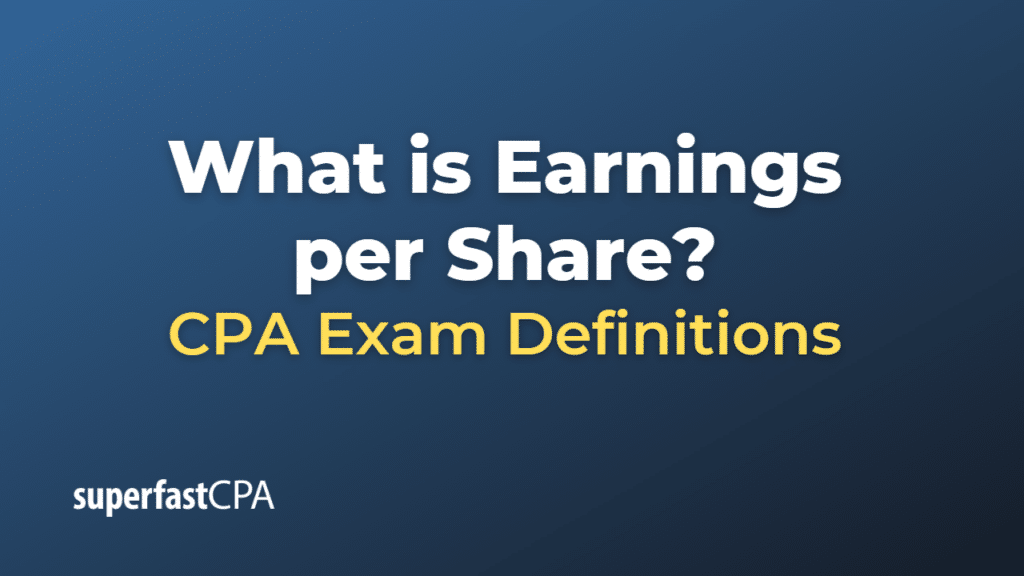Earnings per Share
Earnings Per Share (EPS) is a measure of a company’s profitability that is of particular interest to shareholders. It is calculated by dividing the company’s net income by the number of outstanding shares of its common stock. The result is the amount of earnings attributable to each share of common stock.
The formula for EPS is:
\(\text{EPS} = \frac{\text{Net Income – Preferred Dividends}}{\text{Average Outstanding Common Shares}} \)
There are two main types of EPS figures that companies report:
- Basic EPS: This calculation uses the number of shares currently outstanding (not taking into account potential future shares from options, convertible securities, etc.)
- Diluted EPS: This calculation considers all securities that could potentially be converted into common shares, such as stock options, convertible bonds, etc. This tends to provide a more conservative measure of EPS, as it assumes that all such conversions have occurred, thus increasing the denominator and potentially reducing the EPS figure.
EPS is often used by investors and analysts as a key metric for assessing a company’s profitability and financial health. Higher EPS values are generally seen as a positive sign, as they indicate that a company is able to generate substantial earnings relative to its number of outstanding shares.
However, it’s also important to consider EPS in conjunction with other financial indicators and in the context of the company’s overall financial performance and market conditions. For instance, a high EPS could be the result of a decrease in the number of outstanding shares due to a buyback, rather than an increase in net income. Similarly, a low EPS doesn’t necessarily mean a company is performing poorly if it’s investing heavily in growth opportunities.
Example of Earnings per Share
Let’s consider a hypothetical company named “AutoTech Inc.”
In a given year, AutoTech Inc. reports a net income of $10 million. They have also paid $1 million in preferred dividends. The number of outstanding shares of common stock for the same period is 4 million.
To calculate the earnings per share (EPS), we would use the formula:
\(\text{EPS} = \frac{\text{Net Income – Preferred Dividends}}{\text{Average Outstanding Common Shares}} \)
Substituting in the values from AutoTech Inc:
\(\text{EPS} = \frac{\text{\$10 million – \$1 million}}{\text{4 million shares}} = \text{\$2.25 per share} \)
So, for that year, AutoTech Inc. has an EPS of $2.25. This means that for each share of AutoTech Inc. common stock, the company generated $2.25 of earnings.
Investors and analysts would then compare this EPS figure to those of previous years, to the company’s stock price (to compute the price-to-earnings or P/E ratio), and to the EPS figures of other similar companies, in order to assess AutoTech Inc.’s profitability and financial performance.













